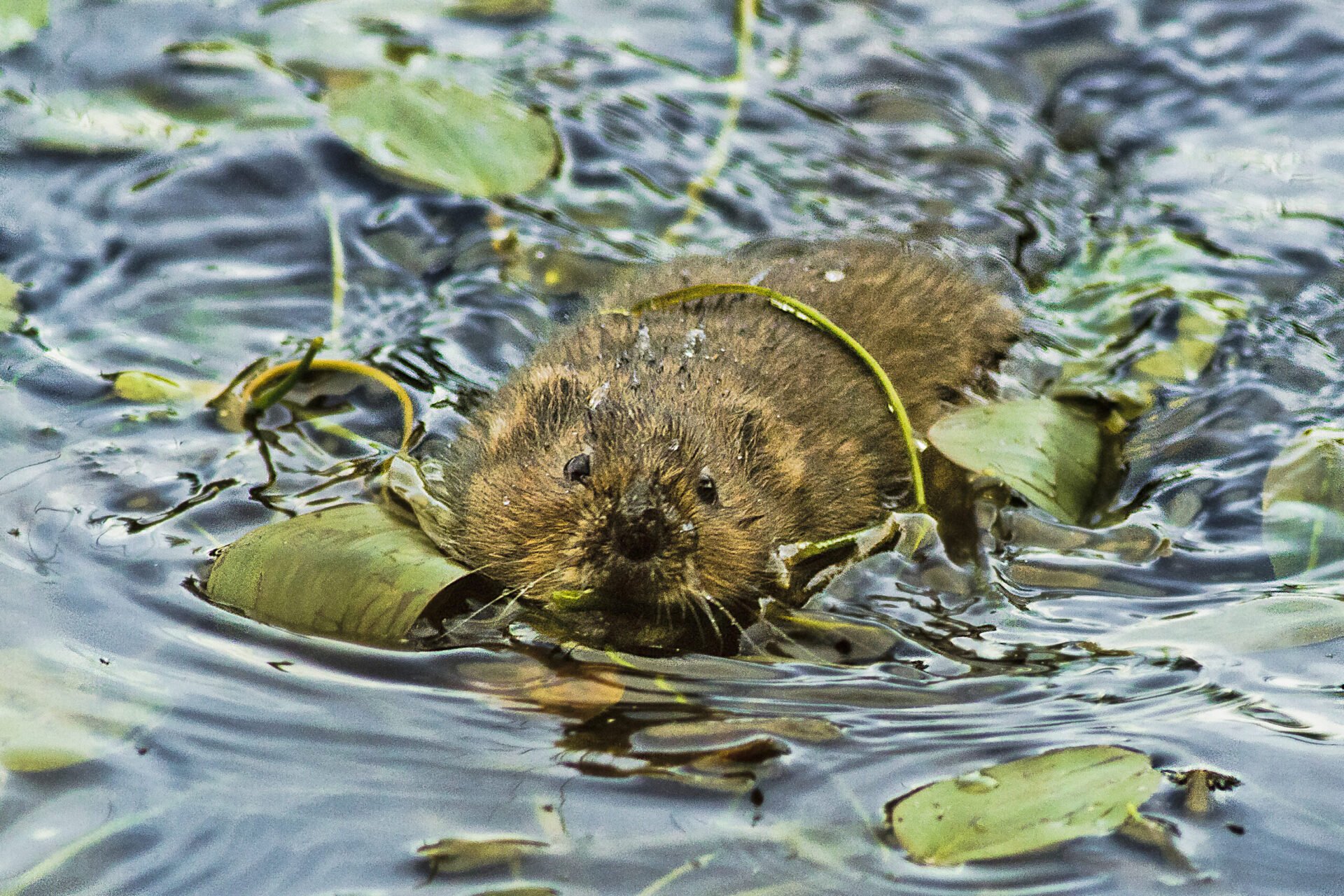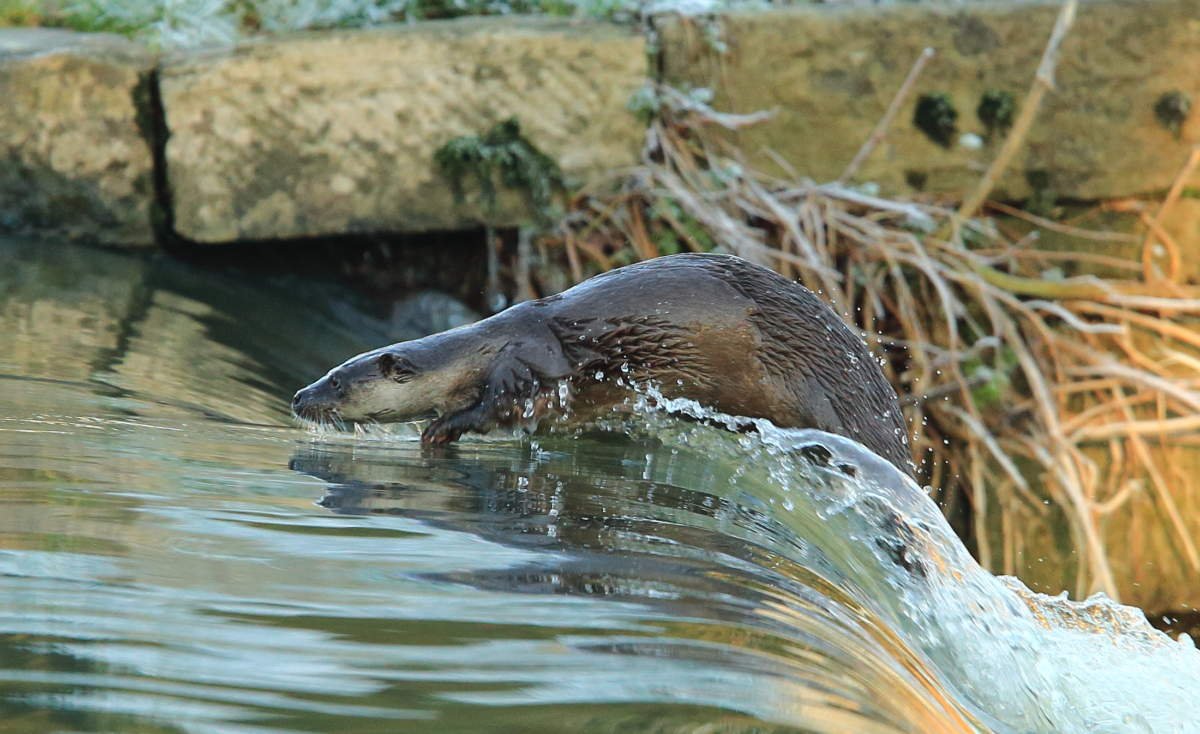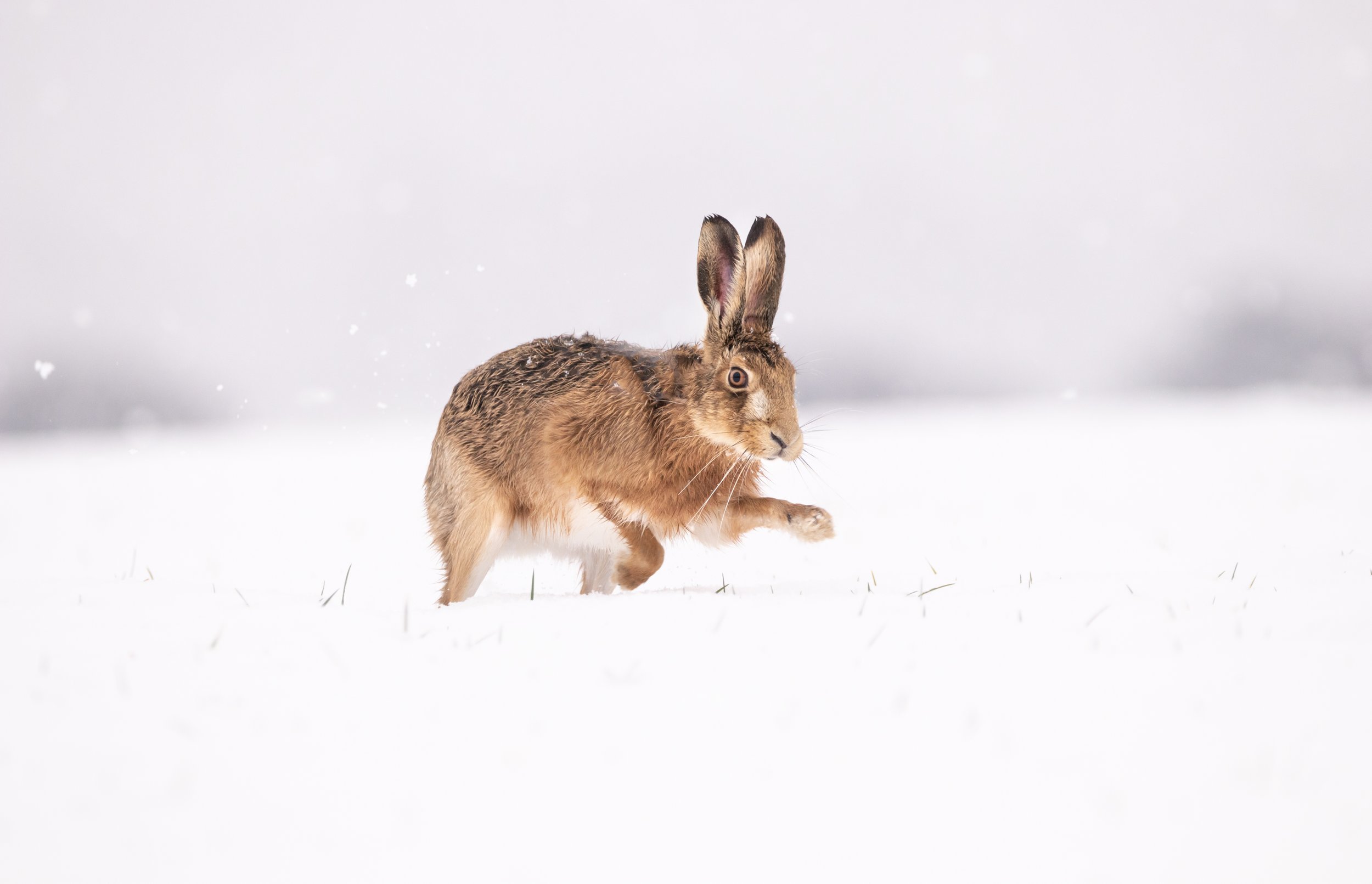Britain’s forgotten and underrepresented mammals
European Bison
These forgotten and underrepresented mammals include species that are endangered, extinct, urban, small and under-recorded. We reviewed the Red List for Britain’s Mammals and the work of organisations across the UK to determine these flagship species. In some cases, organisations may be actively working—or planning reintroductions—for these species. In other cases, these forgotten mammal species represent the kinds of compelling stories that need to be told, even if nobody is currently doing it. They represent the land that lies between the North Atlantic and the North Sea, known as the United Kingdom, and may present opportunities for conservation action.
Endangered mammals
Endangered mammals are sometimes overlooked because their habitats and populations are often distant or inaccessible to most people. But they hold profound importance as invaluable subjects for scientific research, offering insights into evolutionary processes and ecological interactions. Protecting and restoring populations of endangered mammals is essential for maintaining the delicate balance of our planet's ecosystems and ensuring the wellbeing of future generations.
Pine marten, Martes martes
Pine martens are critically endangered in England and Wales due to habitat loss and hunting. Over the second half of the 20th century, Scottish pine marten populations increased with legal protection and conservation efforts helping the species achieve a significant recovery with a healthy population of over 4,000 individuals. Now legally protected, the pine marten population is spreading across Scotland once more but remains very rare in England and Wales.
They are curious and playful carnivores that rely on the cover of native woodland and conifer populations to hunt for food such as small mammals, birds, fruit and invertebrates. There is evidence to suggest that the grey squirrels may be part of their diet, reducing the numbers of these non-native rodents, which has a positive impact on the threatened red squirrel.
Organisations such as the Vincent Wildlife Trust and Gloucestershire Wildlife Trust have led reintroduction programmes, relocating pine martens from Scotland to bolster populations in mid-Wales and the Forest of Dean. Initiatives like the Two Moors Pine Marten Project and The Pine Marten Restoration Project are working to restore this elusive carnivore's presence to Devon and Sussex.
Pine marten by Shane Stanbridge
Wildcat, Felis silvestris grampia
Wildcats are critically endangered in Scotland. Due to persecution and habitat loss, and cross-breeding with domestic cats, they were driven from England and Wales, with the remaining numbers found in Scotland. As this species is elusive and populations are fragmented, they are hard to count, but estimates suggest that just a few hundred remain.
They are shy and feisty carnivores that live in dens and tend to maintain a territory of at least a few hundred hectares, mostly woodland with some open pasture for hunting. With a stockier build and a bushier tail than the domestic cat, they use different strategies to hunt small mammals and larger prey such as rabbits.
The biggest threat to the survival of the wildcat is hybridisation with domestic cats, which erodes the separate genetic identity of wildcats, mixing their gene pool with that of domestic cats.
Organisations such as Saving Wildcats are working to preserve this iconic species with captive breeding programmes that aim to have 150 wildcats as a source population to reinforce numbers in Scotland. Following their example, feasibility studies for wildcat reintroductions are now beginning for the reintroduction of the wildcat in England and Wales.
Wildcat by Peter Cairns
Eurasian beaver, Castor fiber
Eurasian beavers are critically endangered in England. They used to be widespread in Britain but were hunted to extinction between 300 and 400 years ago for its fur, meat and glands, which produced a sought-after oil. Along with the disappeared beaver, went the mosaic of lakes, meres, mires, tarns and boggy places that it created.
This semi-aquatic herbivore is the world’s second largest rodent and is considered a keystone species whose activities shape the environment and increase biodiversity. These monogamous animals live in family groups in broadleaved woodlands next to standing freshwaters or slow-moving streams and feed on herbaceous and woody broadleaved species.
In May 2009, The Scottish Beaver Trial saw the first licensed release of beavers into Britain. In July 2022 were beavers given legal protection in England. Since then, there have been several reintroductions (both legal and illegal), across Scotland, Devon, Cornwall, Kent and more.
Beavers by Jason Parry-Wilson
Extinct British mammals
Extinct mammals are frequently forgotten because their absence from present ecosystems makes them less tangible and immediate in people's minds. Additionally, the passage of time can lead to a disconnect from their significance, overshadowed by more pressing contemporary environmental issues. Though no longer around, they remain crucial subjects of study. Understanding their past roles in ecosystems and evolutionary history informs conservation efforts, advances scientific knowledge, and underscores the importance of protecting current biodiversity.
Lynx, Lynx lynx
The Eurasian lynx went extinct in Britain around 1,300 years ago, due to hunting and habitat loss. Though experiencing similar declines across Europe, conservation efforts halted this decline. Populations are now recovering across much of eastern Europe, with reintroductions taking place across Switzerland, Germany and Slovenia.
This wild cat lives in rugged rocky areas of forest and woodland where they can ambush prey such as deer, foxes, rabbits, rodents and birds. Though a shy and elusive predator, they help keep other species on the move which controls overgrazing and allows tree saplings and other vegetation to establish.
In Britain, we are missing all our large predators, and the lynx is the best candidate to restore some of these vital natural processes. Studies show that the Scottish Highlands can support around 400 lynx, which increases as woodland expands.
Trees For Life are working collaboratively with SCOTLAND: The Big Picture, The Lifescape Project and Ariane Burgess MSP, to positively build the conversation about “returning this missing keystone species, so that all sides of the discussion are heard and respected.”
Lynx by SCOTLAND: The Big Picture
Wolf, Canis lupus
Wolves went extinct in Britain sometime in the 18th century and were the last of Britain’s top predators that were hunted to extinction following centuries of persecution, feared for their perceived threats to humans and livestock. They went extinct across much of western Europe until Poland banned wolf hunting in the 1990s, and populations have been recovering since.
They live in woodland and scrubland with enough habitat and food maintain a pack, preferring to hunt deer, wild boar and other ungulates. As a keystone species, they impact predator-prey dynamics, affecting how prey moves across the landscape which can boost by biodiversity by reducing overgrazing and supporting the growth of woodland and mosaic habitat.
With a long history of demonisation and myth-making, wolves are likely not coming back to Britain for the foreseeable future. Any reintroduction would require lengthy public consultation and detailed habitat assessments with consideration of livestock.
Bison, Bison schoentensacki
The globally extinct forest bison (Bison schoentensacki) lived in Britain at least during the Pleistocene. Thanks to The Wilder Blean project in Kent, its close relative, the European bison (Bison bonasus), was brought back to Britain in July 2022 to act as a surrogate for this extinct species and help with woodland recovery and management on a controlled site.
The European bison is a keystone species and the heaviest living wild land animal in Europe, living in woodland and across open mosaics of grassland and shrubs that have a good watering hole where their presence supports the creation of mosaic habitat through grazing, foraging, wallowing and trampling. They also disperse seeds that stick to their fur.
Britain’s smallest mammals
Our smallest mammals, like the pygmy shrew and harvest mouse, often go unnoticed due to their size and elusive nature. However, studying them is vital as they play key roles in ecosystems, controlling insect populations and aiding in seed dispersal, highlighting the importance of their conservation.
Pygmy shrew, Sorex minutus
Pygmy shrews are one of Britain’s smallest mammals – hardly larger than a thumb. This small, insectivorous mammal has tiny eyes and a large pointy nose, which gives it a good sense of smell.
With an energetic metabolism and voracious appetite, they feed mainly on insects, spiders and woodlice, consuming 125% of their body weight daily and needing to feed every 2-3 hours to survive, long enough to have one or two litters of around six young.
They can be found in most habitats, from woodlands to gardens and are active day and night, largely above ground. Though solitary and territorial, they will frequent burrows dug by other mammals, as they are poor burrowers themselves. They can sometimes be heard fighting, their high-pitched squeaks more noticeable in summer.
Pygmy shrew by Becky Haywood
Common pipistrelle, Pipistrellus pipistrellus
The common pipistrelle is our smallest and most common bat—small enough to fit in a matchbox but still capable of eating around 3,000 insects in a night.
Like all UK bats, the pipistrelle is nocturnal – preferring to come out at night. They feed on midges, moths and other flying insects that they find in the dark by using echolocation.
Found at across all habitat types including high altitudes and urban areas, the common pipistrelle roosts in tree holes, bat boxes and even the roof spaces of houses. Hibernating over the winter, usually between November and April, females come together in the summer, forming maternity colonies to have a single pup each.
Common pipistrelle by Daniel Hargreaves
Harvest mouse, Micromys minutus
Harvest mice weigh as little as a mere 2p piece. This tiny rodent makes it home within the tall grasses of meadows and hedgerows, constructing intricate spherical nests, woven from grass.
Despite their size, they are extremely active climbers, utilising their prehensile tails to grasp onto grass stems with dexterity akin to a fifth limb. They can be found feeding in the stalk zone of long grasses and reeds, particularly around dusk and dawn, with hearing so acute, they will react sharply; either freezing or dropping into cover in response to rustling sounds up to 7m away.
Alongside insects, they feed on a mixture of seeds and berries, although moss, roots and fungi may also be taken, showcasing their resourcefulness amidst their preferred habitats.
Harvest mouse by Sarah Butcher
Britain’s urban mammals
Urban mammals, including voles and whales, often blend into the landscape, their presence overshadowed by human activity. Adaptability enables them to survive in cities, but challenges like habitat fragmentation and human encounters persist. Studying them is crucial for understanding urban ecology and managing human-wildlife interactions.
Water vole, Arvicola amphibius
Urban populations of water voles are more common in the UK than previously thought. They were recorded in 28 out of 64 official UK cities in the last decade (2010–2018), with rivers and streams within parks, sports grounds, and urban reserves were the most important habitat types.
Water voles are legally protected in Britain. Recent evidence indicates that water voles have undergone a long-term decline in Britain, disappearing from 94% of their former sites. Predation by the introduced American mink has had a severe impact on water vole populations, even causing local extinctions. Habitat degradation and pollution are also thought to have contributed to the decline of the water voles. Despite their challenges, these proficient swimmers persist in urban areas, utilising riverbanks and canals for habitat. Urbanisation has fragmented their natural habitats, leading some water vole populations to seek refuge in urban green spaces and restored wetlands.
Predator exclusion, bank side management and pollution control provide viable tools for sustaining local populations. Water voles are also probably affected by poor water quality, both directly through contamination of water bodies with pollutants and indirectly through eutrophication, the build-up of nitrogen levels in water which causes algal blooms and loss of their food plants.
Water vole by David Gibbon
Otter, Lutra lutra
Otters are often elusive, with large ranges and nocturnal behaviour making them a rare mammal to spot. Despite catastrophic declines in the 1950s and 1960s, Eurasian otters have made a remarkable comeback in UK rivers, even venturing into urban areas in search of suitable habitat and prey. Their transition from the wild to urban environments is facilitated by new legal protection and improvements in the water quality of rivers.
As populations steadily recovered, otters have been reported in more urban locations across Britain including London, likely due to the need for territory as numbers increase. A male otter needs a stretch of territory about 13 kilometres long, although it depends on the width of the waterway and the abundance of food available.
Urban rivers and wetlands provide otters with abundant food sources and sheltered habitats, enabling their resurgence in urban landscapes. But the city lifestyle presents new threats including road accidents and plastic pollution which are unfortunate results of their expansion.
Otter by Paul Dibben
Whales, Cetacea
While typically associated with open seas, humpback whales have made occasional appearances near UK cities, particularly in estuarine environments like the Thames and Forth estuaries.
Their transient presence in urban waters underscores the increasing presence of whales along British coastlines, driven by factors such as changing oceanic conditions and prey availability.
While their visits to urban areas may be fleeting, these sightings highlight the interconnectedness of marine and terrestrial ecosystems, urging conservation efforts to protect marine habitats and wildlife.
Humpback whale
Under-recorded British mammals
Under-recorded mammals, such as polecats or cetaceans, receive limited attention in scientific surveys and monitoring efforts. This can be due to their elusive behaviour, nocturnal activity, and habitat preferences that make them difficult to identify and study, often leading to misidentification issues, further complicating accurate data collection. Addressing this knowledge gap is essential for accurately assessing biodiversity, understanding ecosystem dynamics, and implementing effective conservation measures.
Mountain hare, Lepus timidus
The mountain hare is listed as Near Threatened on the UK Red List of Mammal Species which concluded that data on population trends were inconclusive, likely due to limited access to remote habitats. They are often mis-recorded due to their elusive nature and seasonal colour change, which can lead to confusion with other species like brown hares.
In Britain, mountain hares are associated with heather moorlands, particularly those which are managed by burning in strips for red grouse. Native to the Highlands of Scotland, mountain hares have also been introduced to the Southern Uplands, the Peak District and on some Scottish Islands. Habitat loss due to changes in land use, such as afforestation and intensive agriculture, has fragmented mountain hare populations.
Reliable population data is essential for assessing the effectiveness of conservation measures and identifying areas for habitat restoration. Improved monitoring can help track population trends and understand the impacts of changing environmental conditions.
Mountain hare by Laura Jackson
Whales, dolphins and porpoises, Cetacea
Marine mammals are historically under-recorded, despite playing important roles in marine ecosystems by regulating prey populations, nutrient cycling, and maintaining ecosystem balance. Though challenging to survey due to their wide-ranging movements and seemingly cryptic behaviour, conservation of whales, dolphins, and porpoises is essential for preserving marine biodiversity and ecosystem health. Additionally, misidentification of species and limited access to offshore habitats contribute to a data gap.
Human activities such as overfishing, habitat destruction, pollution, and climate change pose significant threats to marine mammals. Bycatch in fisheries, habitat degradation, and noise pollution from maritime traffic and industrial activities are particularly detrimental.
Comprehensive data on population abundance, distribution, and trends are critical for effective conservation and management strategies. Improved monitoring can help assess the impacts of anthropogenic pressures and guide conservation efforts to mitigate threats.
Common dolphin by Dan Lettice
Polecat, Mustela putorius
The polecat is a member of the weasel family, including otters, stoats and weasels, and is one of the most under-recorded groups of mammals, likely due to their elusive nature making them difficult to spot. Until the 19th Century, polecats were found throughout much of mainland Britain and the Isle of Wight. Habitat fragmentation, persecution by gamekeepers and being killed for their fur reduced populations to the edge of extinction.
They are mainly nocturnal and solitary, and the most common evidence of their presence is road casualties. The polecat is closely related to ferrets and escaped, or feral ferrets may breed with wild polecats to produce wild polecat-ferret hybrids, which are generally paler in appearance than polecats.
Polecats are a priority species of the UK Biodiversity Action Plan, meaning they are threatened, and conservation actions must be taken to protect them. Recent conservation efforts and habitat restoration initiatives have increased polecat populations significantly but despite this resurgence, data on polecat populations and distribution is limited. 2024 saw the return of the National Polecat Survey by the Vincent Wildlife Trust aiming to gather up-to-date information on the current distribution of polecats in Britain, and to look at the relationship between wild polecats and feral ferrets.
Polecat by Alick Simmons
Thank you for reading this blog post! If you found it helpful or simply enjoyed reading it, you can make a one-off donation to the Mammal Society here.
Have questions about this post? Let us know in the comments or by emailing us at info@themammalsociety.org.















